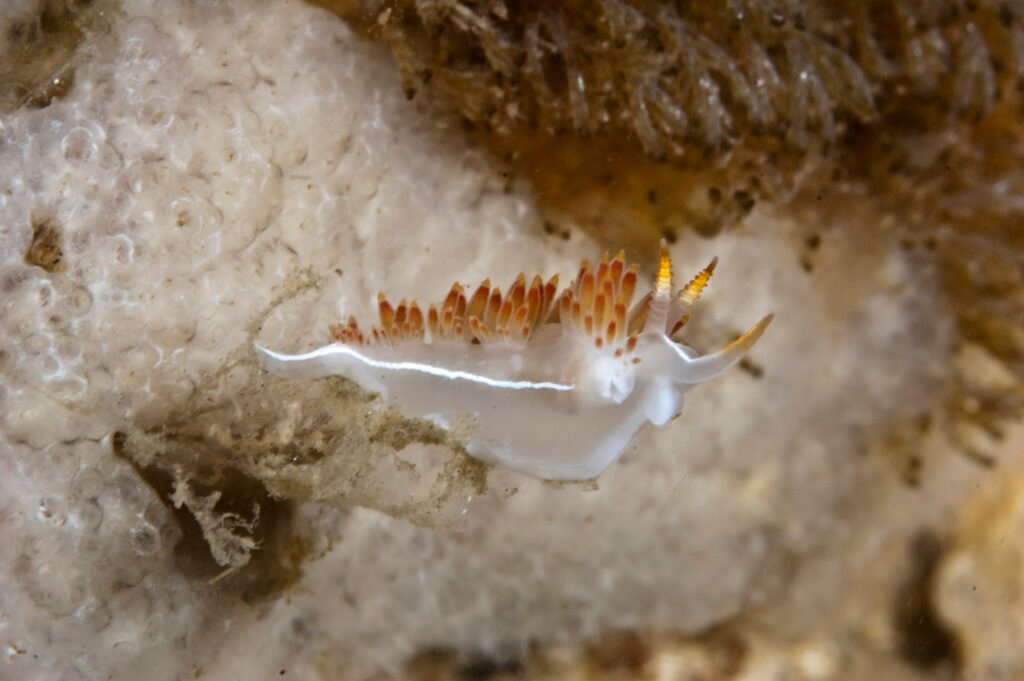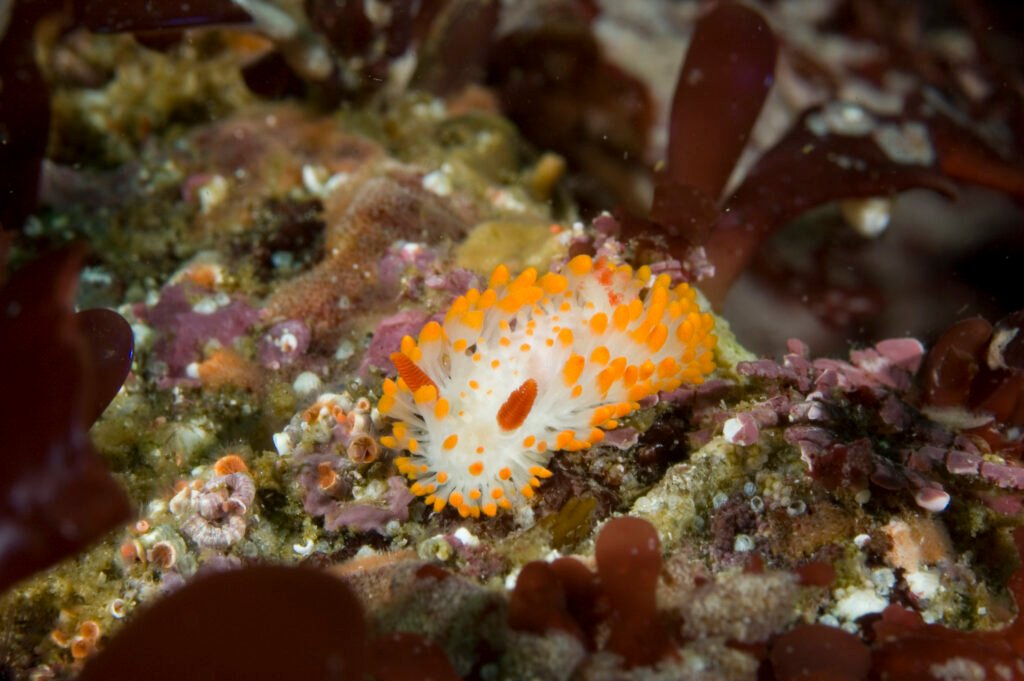Physical Description
Scarlet-Tip Aeolis, scientifically known as Facelina stearnsi, showcases a translucent clear body. Its cerata feature a broad orange to yellow terminal band, sometimes tipped with white. The upper portion of the lamellate rhinophores is also yellowish-orange, occasionally with a white tip. Both the oral tentacles and the tentacular anterior foot corners exhibit an orange midregion and a white tip. Moreover, the oral tentacles bear a white or cream line along the dorsal side, extending across the head to the base of the rhinophores. This line may display red, orange, or yellow pigmentation in some areas. Scarlet-Tip Aeolis typically grows to about 25mm in length.
Habitat and Geographical Range
Found along the eastern Pacific coast, Scarlet-Tip Aeolis inhabit marine environments suitable for their survival and reproduction.
What They Eat and How They Breed
Scarlet-Tip Aeolis likely consumes various marine organisms as part of its diet, although specific dietary preferences are not extensively documented. For reproduction, these creatures likely follow standard nudibranch reproductive patterns, laying eggs in gelatinous masses.
Similar Nudibranchs
There are other species of aeolid nudibranchs that are very similar to the Scarlet-tip aeolis. The key features to look for are a translucent white body with no stripes or lines, and orange or yellow tips on the cerata and rhinophores. If these features do not exist, it may be one of these similar species.













